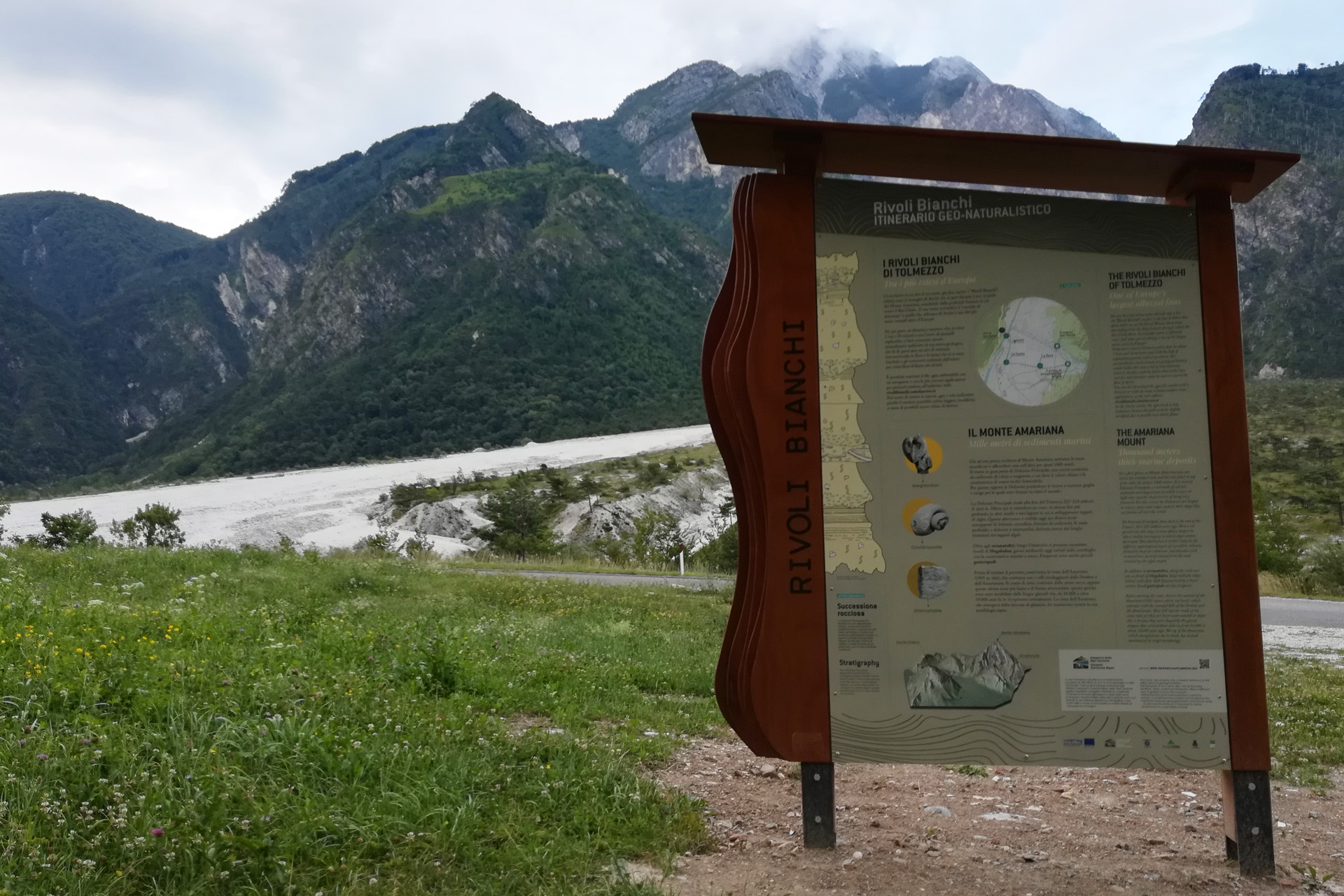In front of us we observe the large accumulation of debris at the base of Mount Amariana: it is one of the largest active alluvial cones in Europe. A cone is a body of debris that is formed when a stream, which first flows into a narrow valley, flows into a wider and lower slope. It is exactly what happens at the Rio Citate, which actually runs through the Amariana’s fault.
On a first glance at Mount Amariana we notice the stratified rocks and the ones piled on top of the other for almost 1000 meters. It is mainly Main Dolomite dating back to the end of the Triassic, 225-210 million years ago. Then a sea spread over this area, in some phases deeper, in others similar to a lagoon in which algal carpets developed. This alternation is visible today in the different superimposed layers of crystalline dolomia, formed by deep sea sediments, and dolomia with stromatolites, derived instead from the mud retained by the algal carpets.

